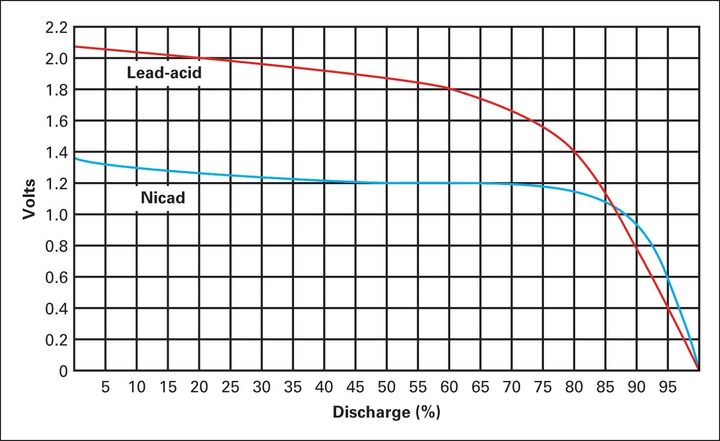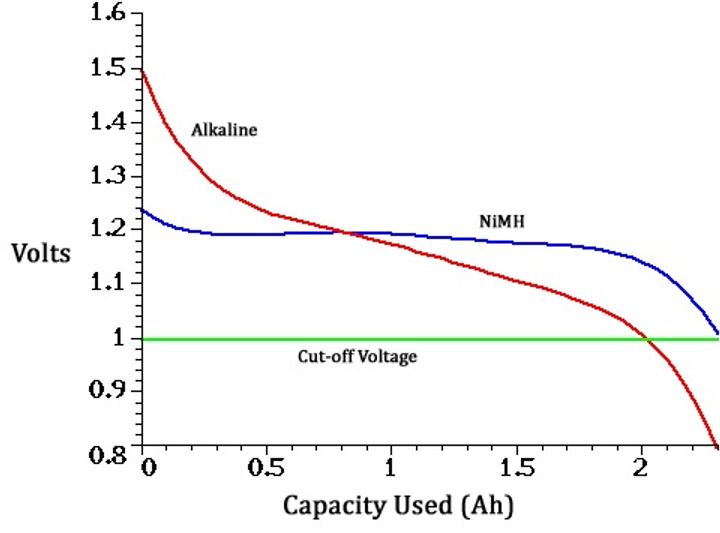Rechargeable AA batteries
Discussion
Tye Green said:
Eneloop seem to be 1.2v rather than 1.5v - does that not cause problems?
Sometimes. There are two technologies - Eneloop (and similar low-self-discharge) are 1.2v NiMH and use traditional AA/AAA chargers.There are also Li-ion AA's with internal "buck" circuitry that output 1.5v, and have micro-USB ports for charging. Loads of these on Ebay / Amazon - quite expensive in comparison, and with very mixed reviews.
Lithium cells are the way to go for full voltage.
Not cheap and need a special charger.
https://www.batterystation.co.uk/xtar-1-5v-aa-2500...
https://youtu.be/ZeyG9FBBBoI?si=vt0fgPOfYiHerXEK
Not cheap and need a special charger.
https://www.batterystation.co.uk/xtar-1-5v-aa-2500...
https://youtu.be/ZeyG9FBBBoI?si=vt0fgPOfYiHerXEK
Edited by Easternlight on Monday 14th October 12:04
Shaoxter said:
Eneloops are the best, although the normal white ones have proved to be more reliable than the Pro in my experience, I've had a couple of Pros which stopped charging.
But if your use case is just TV remotes etc then Amazon basics is fine.
I have a mix of Eneloops and Amazon basics and actually think that the Basics (for the same mAh rating) are better. Both have been recharged dozens of times but the Basics definitely seem to last longer.But if your use case is just TV remotes etc then Amazon basics is fine.
I use a fair amount of AAs. Amazon Basics are fine. I've got about 20 in use, different makes.
2 of the my applications are voltage fussy and I'm now using Hixon Li-on. They give 1.5v and need their own charger. Not sure yet if I'd be better sticking to non-rechargeable for them, as they're costly.
2 of the my applications are voltage fussy and I'm now using Hixon Li-on. They give 1.5v and need their own charger. Not sure yet if I'd be better sticking to non-rechargeable for them, as they're costly.
Tye Green said:
Eneloop seem to be 1.2v rather than 1.5v - does that not cause problems?
For some things it is, a few of our smart thermostats don’t like rechargeables., There’s also eneloop pro, same voltage with higher capacity, but seem to do the trick on more power hungry devices that don’t like the regular ones.Both Nickel Cadmium and Nickel Metal Hydride start at higher than their nominal voltages, Roughly 1.4V for NiCad & 1.3V for NiMH. The cell construction can vary depending upon the application. In the days of R/C cars with nicad packs, Sanyo SCR cells were virtually like capacitors, you could charge them fast and discharge them very quickly, although they wouldn't hold their charge for more than a day or two. Sanyo SCEs on the other hand were better for endurance racing and holding their charge, but needed more care when charging.
These days as the others have said, Sanyo Eneloop NiMHs are the go-to cell when reliability outweighs cost, plus they will hold their charge for quite some time.
Leaving both Nicads and NiMHs on charge once they are charged is apparently a major contibuting factor to corrosion of the negative wire and deterioration of the cells. A peak detection charger is said to prevent this happening.
Don't believe the capacity claimed on cheap cells sold on ebay and AliExpress. Even Lidl cells have been tested and shown to be much worse than the claimed capacity. Companies such as Overlander have built a reputation on supplying batteries that actually do what they claim. Originally they were aimed at modellers, but with so many modellers being engineers in the day job, they are often used when a reliable battery is needed at work.
I I could have found a graph that compared NiCad, NiMH and Alkaline cells I would have posted it. As I couldn't, these will have to do.


These days as the others have said, Sanyo Eneloop NiMHs are the go-to cell when reliability outweighs cost, plus they will hold their charge for quite some time.
Leaving both Nicads and NiMHs on charge once they are charged is apparently a major contibuting factor to corrosion of the negative wire and deterioration of the cells. A peak detection charger is said to prevent this happening.
Don't believe the capacity claimed on cheap cells sold on ebay and AliExpress. Even Lidl cells have been tested and shown to be much worse than the claimed capacity. Companies such as Overlander have built a reputation on supplying batteries that actually do what they claim. Originally they were aimed at modellers, but with so many modellers being engineers in the day job, they are often used when a reliable battery is needed at work.
I I could have found a graph that compared NiCad, NiMH and Alkaline cells I would have posted it. As I couldn't, these will have to do.
Craikeybaby said:
How about chargers? I have a decent selection of Eneloop/Ikea/Amazon/other batteries, but the charger I use isn't great.
The chargers that modellers use are peak detection chargers and will stop when it considers the battery is charged. I use an IMAX B6 charger and a Ripmax Sigma Propeak Charger. Both have a digital display showing the battery voltage as it charges and they will charge Nicad, NiMH, Lithium Iron, Lithium Polymer and Lead acid batteries. If you can pick up a used one from Ebay or Facebook Marketplace you won't regret it. Gassing Station | Computers, Gadgets & Stuff | Top of Page | What's New | My Stuff



